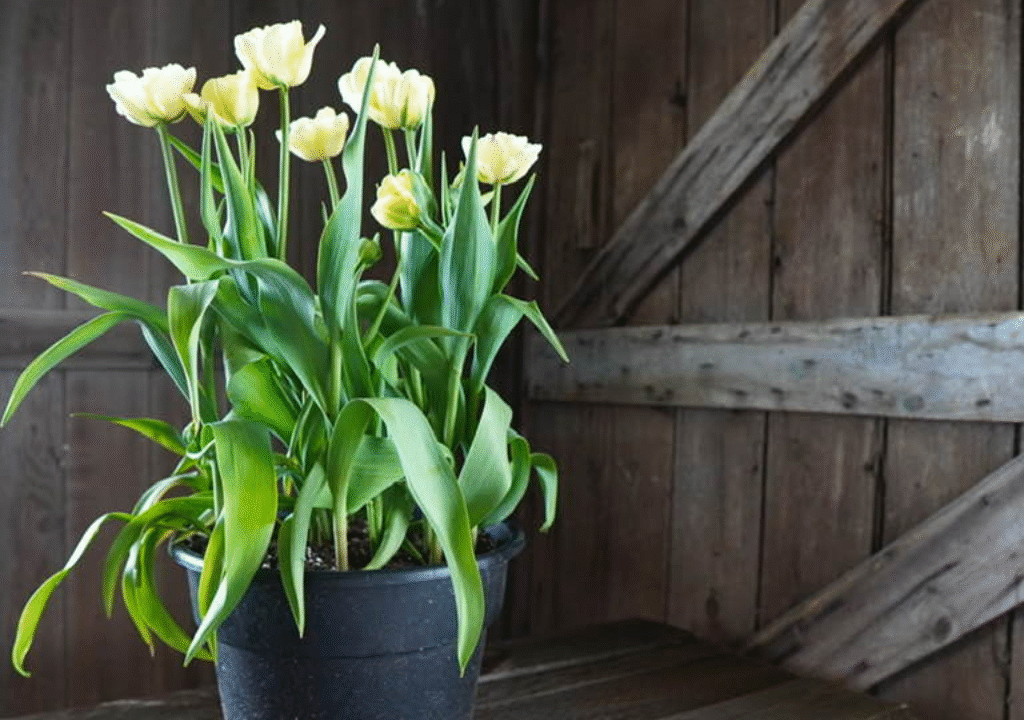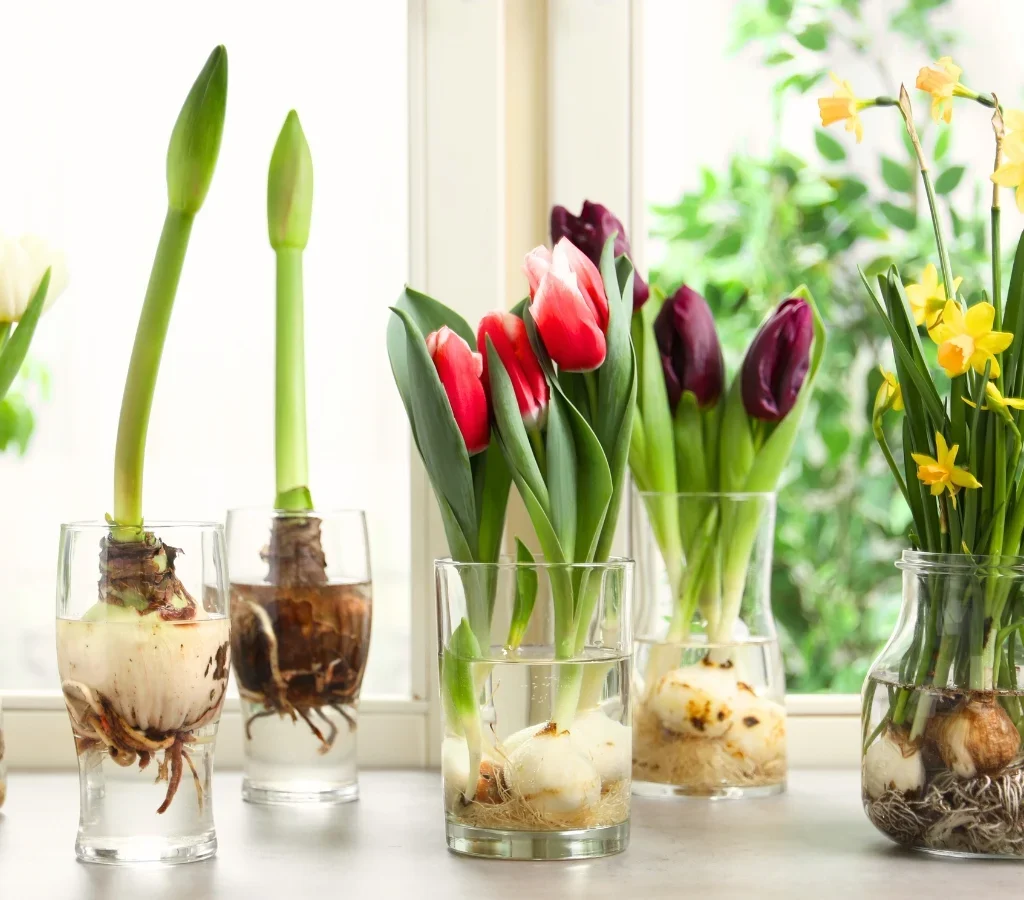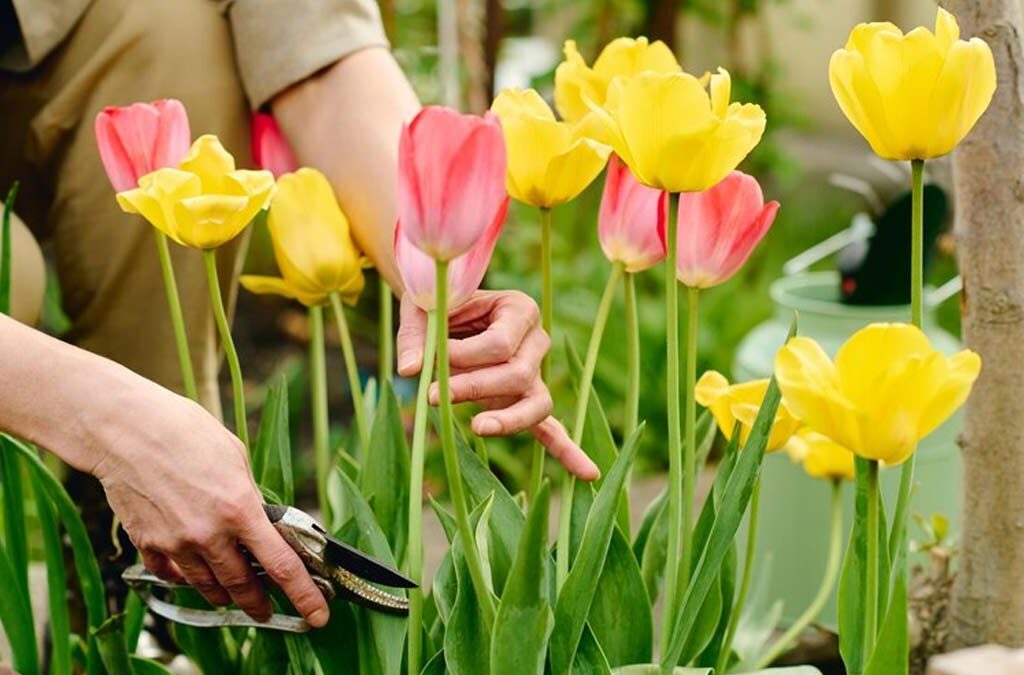Few flowers announce the arrival of spring as beautifully as tulips. Their vibrant colors, graceful shapes, and simple elegance have made them one of the world’s most beloved flowers for centuries. From classic crimson reds to rare, multicolored hybrids, tulips are surprisingly easy to grow — even if you’re new to gardening.
In this complete guide, you’ll learn everything you need to know about how to start growing tulips, from choosing the right bulbs to planting, care, and even enjoying them year after year.

Why Grow Tulips?
Before diving into the how-to, let’s quickly explore what makes tulips such a popular garden flower:
- Stunning Variety: Over 3,000 registered varieties in almost every color imaginable.
- Early Spring Blooms: One of the first flowers to bloom after winter’s chill.
- Low Maintenance: Hardy, resilient, and require little fuss once planted.
- Great for Cutting Gardens: Tulips look fantastic in vases and floral arrangements.
- Attract Pollinators: Bees and early insects adore their nectar-rich blooms.
Understanding Tulip Types
Tulips come in different categories based on bloom time, flower shape, and height. Choosing the right type ensures a continuous display throughout spring.
Popular Tulip Groups:
| Type | Bloom Time | Features |
|---|---|---|
| Single Early | Early Spring | Classic cup-shaped blooms |
| Double Early | Early Spring | Peony-like, multi-petal blooms |
| Triumph | Mid-Spring | Large flowers, perfect for cutting |
| Darwin Hybrid | Mid-Spring | Tall, bold, and long-lasting |
| Parrot | Mid to Late Spring | Fringed, ruffled, multicolored petals |
| Fringed | Late Spring | Elegant fringed petal edges |
| Lily-Flowered | Late Spring | Pointed petals, delicate silhouette |
Pro Tip:
For a long-lasting display, plant a mix of early, mid, and late-season tulips.

Best Time to Plant Tulips
Timing is everything when it comes to growing tulips. Since they require a cold period to develop properly, planting them at the right time ensures healthy, beautiful blooms.
When to Plant:
- Fall is ideal — typically 6 to 8 weeks before the first hard frost.
- Soil temperature should be below 60°F (16°C) for optimal rooting.
Note:
In warmer climates (zones 8-10), refrigerate bulbs for 6-8 weeks before planting to mimic winter conditions.
Where to Plant Tulips
Tulips thrive in well-drained, sunny locations. Picking the right spot helps prevent issues like rotting and weak growth.
Ideal Growing Conditions:
- Full Sun to Partial Shade: At least 6 hours of direct sunlight daily.
- Well-Draining Soil: Loose, sandy loam with a neutral to slightly acidic pH (6.0-7.0).
- Sheltered from Harsh Winds: Tall tulip varieties can topple in strong gusts.
Tip:
Avoid soggy areas or spots where water pools after rain.

Preparing the Soil
Healthy soil makes a world of difference for your tulip blooms. Take time to prep the ground properly.
Steps to Prepare Soil:
- Loosen soil to a depth of 12-15 inches.
- Mix in compost or well-rotted manure to enrich the soil.
- Add a handful of bone meal or bulb fertilizer to each planting hole.
- Remove rocks and weeds to give the bulbs room to grow.
How to Plant Tulip Bulbs
Planting tulip bulbs is delightfully simple, making it an ideal gardening task for beginners and kids alike.
Planting Instructions:
- Dig a hole 6-8 inches deep (3 times the bulb’s height).
- Place the bulb pointy end up.
- Space bulbs 4-6 inches apart for a dense display.
- Cover with soil and gently pat down.
- Water thoroughly to help bulbs settle.
Pro Tip:
For a natural, clustered look, plant bulbs in odd-numbered groups (5, 7, 9) rather than straight rows.

Caring for Tulips
Once your bulbs are in the ground, care is minimal but essential for long-lasting beauty.
Watering:
- Water immediately after planting.
- Keep soil slightly moist during active growth (early spring).
- Avoid overwatering — tulips dislike soggy conditions.
Fertilizing:
- Apply a light bulb fertilizer or balanced 10-10-10 mix in early spring when shoots appear.
- Avoid high-nitrogen fertilizers which encourage foliage over flowers.
Mulching:
- Apply a 2-3 inch layer of mulch in late fall to insulate the bulbs and retain moisture.
- Remove excess mulch in early spring as temperatures warm.
Dealing with Common Tulip Problems
Even hardy tulips can face pests and issues. Here’s how to prevent or manage them:
Pests:
- Squirrels and rodents may dig up bulbs — deter them with chicken wire or blood meal.
- Aphids: Spray with insecticidal soap or a strong jet of water.
Diseases:
- Tulip Fire (Botrytis): Remove affected leaves and avoid overhead watering.
- Bulb Rot: Ensure excellent drainage and avoid planting in waterlogged areas.
Pro Tip:
Rotate tulip planting spots every few years to prevent soil-borne diseases.

How to Enjoy and Extend Your Tulip Blooms
Maximize your tulip enjoyment with these simple tricks:
- Deadhead spent blooms to prevent seed production and direct energy to the bulb.
- Allow foliage to yellow and die naturally before removing it — this process nourishes the bulb for next year.
- Cut tulips for vases when buds are fully colored but not open.
Pro Tip:
Tulips continue to grow after being cut, so leave extra stem length for arrangements.
Storing and Replanting Tulip Bulbs
In regions with wet summers or poor drainage, it’s wise to dig up tulip bulbs after flowering.
How to Lift and Store Bulbs:
- Wait until foliage has yellowed.
- Carefully dig up bulbs and remove excess soil.
- Allow to air-dry in a cool, shaded place.
- Store in a mesh bag or paper sack in a dry, dark, and well-ventilated area.
- Replant in fall.

Fun Tulip Facts
- Tulips were once more valuable than gold during Tulip Mania in 17th-century Holland.
- Native to Central Asia, not the Netherlands as many believe.
- There are 3,000+ registered tulip varieties worldwide.
Final Thoughts
Growing tulips is one of the most rewarding ways to welcome spring into your garden. With a little planning and minimal care, these vibrant blooms can turn any yard, patio, or window box into a splash of color after winter’s grey.
Whether you prefer classic reds, delicate pastels, or exotic fringed blooms, tulips offer endless possibilities for beauty and creativity.
So grab a bag of bulbs this fall and plant a little magic in your garden — come spring, you’ll be greeted by a field of color and sunshine.



